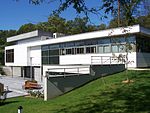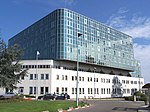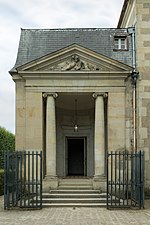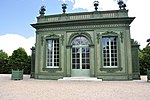Parly 2
1969 establishments in FranceBuildings and structures in YvelinesCommercial buildings completed in 1969Residential buildings completed in 1969Shopping centres in France

Parly 2 is a regional shopping mall and residential condominium composed of a French regional shopping center called Westfield Parly 2 as well as a high-end residential real estate complex located in Le Chesnay-Rocquencourt (Yvelines), constituting a single condominium association, the largest in France and Europe. The shopping center opened on November 4 with 150 shops on 56,000 m2; it is the second shopping center of this size in France, barely two weeks after the opening of Cap 3000 near Nice, in Saint-Laurent-du-Var. Designed to be accessible by cars, it is located near an exit from the A13 and has ample car parks on two and three levels.
Excerpt from the Wikipedia article Parly 2 (License: CC BY-SA 3.0, Authors, Images).Parly 2
Avenue Charles de Gaulle, Versailles
Geographical coordinates (GPS) Address Nearby Places Show on map
Geographical coordinates (GPS)
| Latitude | Longitude |
|---|---|
| N 48.828 ° | E 2.1162 ° |
Address
Westfield Parly 2
Avenue Charles de Gaulle
78150 Versailles, Le Chesnay
Ile-de-France, France
Open on Google Maps











